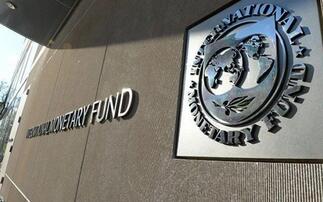As we enter 2020, a rotation in markets seems possible. While central bank policy remains accommodative across the world, there is a risk that the returns to those areas that have been the greatest beneficiaries have largely played out. In recognition of this, investors may already be considering where capital will move to and how a change in market leadership will affect their portfolios. As ever, valuations and yields will be important. In this context, we believe Asian markets overall offer good earnings growth at lower valuations relative to many developed markets.
These modest valuations set investors up for reasonable returns from the region in 2020, while developed markets outside the US struggle to boost growth. But it remains important to be selective as we expect some rotation within markets. In China, in particular, there could be weaker returns from the popular technology and consumer names and stronger performance from other sectors.
Asia earnings outlook appears strong relative to many developed markets
 Source: Fidelity International. Please note that the earnings growth forecasts for Global and the US in 2019 are 0%.
Source: Fidelity International. Please note that the earnings growth forecasts for Global and the US in 2019 are 0%.
|
|
2019 |
2020 |
2021 |
|
Global |
0.0% |
8.0% |
9.1% |
|
Asia-Pacific ex-Japan |
2.8% |
9.3% |
13.0% |
|
Europe |
-3.6% |
6.0% |
6.2% |
|
Emerging markets |
3.4% |
9.9% |
13.0% |
|
Japan |
1.0% |
4.6% |
7.5% |
|
US |
0.0% |
9.5% |
9.4% |
|
China |
13.5% |
6.2% |
11.4% |
Corporate reform and self-help can drive growth
Other themes are emerging. After being re-elected, India's Prime Minister Modi appears to be driving a concerted effort to continue reforming the economy, including the recent move to cut corporation tax rates. These measures demonstrate his desire to create a more business-friendly environment.
In the region's more developed markets, Japan is seeing a step change in corporate restructuring and capital reallocation. While headline growth may seem uninspiring, Japanese companies are becoming classic self-help stories, restructuring their portfolios, divesting uneconomic businesses and actively managing their balance sheets. However, concerns about the overall demand environment and lack of inflation continue to weigh on valuations.
Similarly, corporate governance is evolving in China, alongside the opening up of capital markets. The consumption story in China remains strong, although it is interesting to note how local brands are now growing at a faster rate than international brands across a range of categories including food and luxury goods. In fact, Chinese luxury brands could soon infiltrate western markets just as Japanese ones did back in the 1980s, reflecting a shift in global influence. South East Asian economies, meanwhile, should benefit from underlying economic development, as well as international investment such as the China ‘belt and road' initiative.
Global slowdown is a bigger risk for China than debt
Chinese indebtedness remains a theme for global investors, but it is important to contextualise the risk. While China's current account has moved from surplus to deficit, this reflects in part the changing shape of the Chinese economy from a heavy reliance on exports to a more balanced economy. There is more debt at the household level as people have rushed to buy property, but state-owned enterprises have been de-leveraging and policy measures have limited overall lending growth.
Dollar weakness could support returns
A weaker US dollar in 2020 would help support not only underlying growth and liquidity conditions, but also returns for global investors. There has been a belief that cuts in reserve rates represent an attempt by China to devalue its currency to increase competitiveness. However, the country's ambition to develop the renminbi as an international currency suggests that stability is a greater long-term priority. Meanwhile, sovereign debt markets in Asia and Asian high yield look attractive on a relative basis because of the combination of yield, growth and some de-leveraging.
We are incrementally more bearish on the dollar thanks to more accommodative policy in the US. There is a recognition that the US-China trade war has stopped escalating, even if a deal is hard to achieve. Because Asia has transitioned to a more consumption-based economy, the trade tensions should have less of an impact on underlying growth than many had feared. There is still potential for companies - due to balance sheet management and underlying demand - to deliver strong earnings growth. Finally, as some of the tailwinds supporting the market leaders of recent years run out of steam, we may see a rotation towards asset classes and areas of the market with more attractive valuations.
Being aware of liquidity levels may also become more important if the benign conditions that investors have enjoyed over recent times begin to change. Those chasing returns in less liquid assets may suddenly find that they miss the value inherent in large listed Asian securities that has been hiding in plain sight.
Further information
You can view more Asia focused thought-leadership from Fidelity covering a broad range of investment ideas from across the region from the links below.
A different perspective on Asia
This information is for investment professionals only and should not be relied upon by private investors.
The value of investments can go down as well as up and you may not get back the amount invested. Past performance is not a reliable indicator of future returns. Investors should note that the views expressed may no longer be current and may have already been acted upon. The value of investments in overseas markets may be affected by changes in currency exchange rates. Investments in small and emerging markets can be more volatile than other more developed markets. Reference to specific securities should not be construed as a recommendation to buy or sell these securities and is included for the purposes of illustration only. Investments should be made on the basis of the current prospectus, which is available along with the Key Investor Information Document and current and semi-annual reports, free of charge on request, by calling 0800 368 1732. Issued by Financial Administration Services Limited and FIL Pensions Management, authorised and regulated by the Financial Conduct Authority. Fidelity, Fidelity International, the Fidelity International logo and F symbol are trademarks of FIL Limited. UKM1219/26365/SSO/NA













